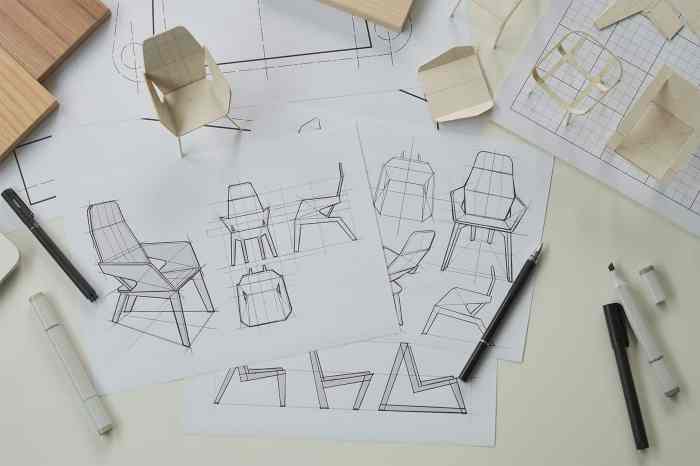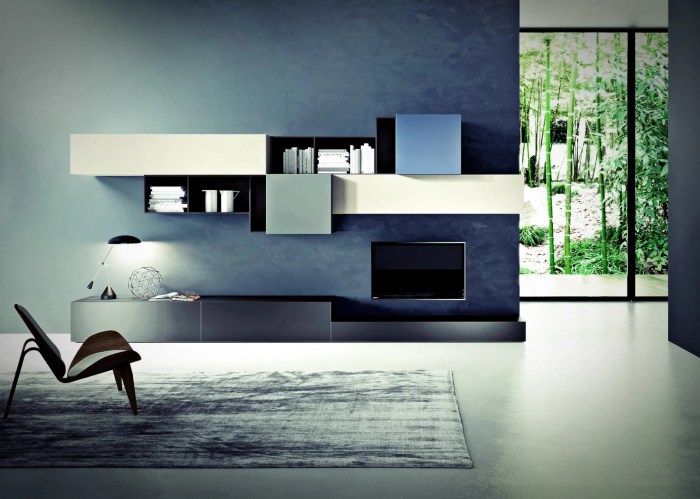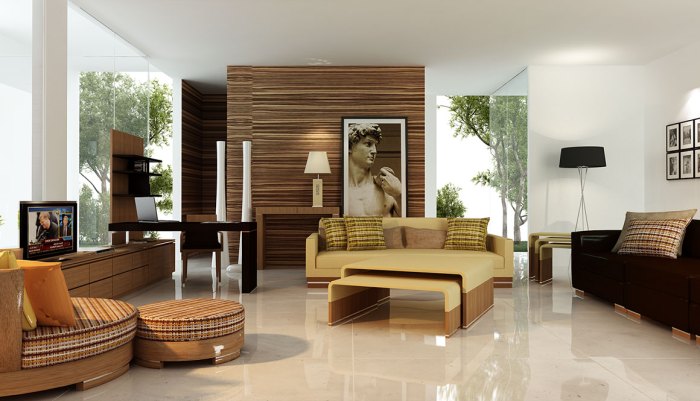Exploring the World of Furniture Design
Step into the realm of furniture design, where creativity meets functionality in a harmonious blend. From traditional to sustainable designs, this topic delves into the evolution and impact of furniture design on interior spaces.
Introduction to Furniture Design
Furniture design plays a crucial role in shaping the functionality and aesthetics of interior spaces. It involves the creation of pieces that are not only visually appealing but also serve a practical purpose within a room. Over the years, furniture design has evolved significantly, reflecting changing trends, technologies, and design philosophies.
Evolution of Furniture Design Trends
- The Early Years: In ancient civilizations, furniture was primarily crafted for practical use, with simple designs and materials.
- The Renaissance Period: Furniture design became more elaborate and ornate, reflecting the art and architecture of the time.
- The Industrial Revolution: Mass production techniques led to the creation of standardized furniture pieces, making them more accessible to the general population.
- Modernism and Contemporary Design: In the 20th century, furniture design saw a shift towards simplicity, functionality, and innovative materials.
Elements of Furniture Design

When it comes to furniture design, several key elements play a crucial role in creating pieces that are not only functional but visually appealing as well. These elements include form, function, materials, and ergonomics. Let's delve deeper into each of these aspects.
Form
Form in furniture design refers to the shape and structure of a piece. It determines the overall aesthetic appeal and style of the furniture. Designers carefully consider the form to create pieces that are visually striking and unique.
Function
Functionality is another essential element in furniture design. A well-designed piece of furniture should serve its intended purpose efficiently and effectively. Designers must balance form with function to ensure that the furniture not only looks good but also meets the needs of the user.
Materials
The choice of materials plays a significant role in the design of furniture. Different materials offer varying aesthetics, durability, and textures, influencing the overall look and feel of the piece. Designers must select materials that align with the design concept and desired qualities of the furniture.
Ergonomics
Ergonomics focuses on designing furniture that is comfortable and supportive for the human body. Considerations such as seat height, backrest angle, and armrest position are essential to ensure that the furniture provides a comfortable and ergonomic experience for the user.
Balance, Proportion, and Scale
Achieving balance, proportion, and scale is crucial in creating visually appealing furniture. Designers must carefully consider the relationship between different elements of a piece, such as size, shape, and placement, to ensure harmony and balance in the overall design.
Color, Texture, and Finishes
Color, texture, and finishes play a significant role in influencing the overall look and feel of furniture. Designers use these elements to enhance the aesthetic appeal, create visual interest, and establish a cohesive design theme. The choice of colors, textures, and finishes can dramatically impact the perception of a piece of furniture.
Types of Furniture Design

When it comes to furniture design, there are various styles that have evolved over time. Traditional, modern, and contemporary design are three major categories that showcase different aesthetics and influences.
Traditional vs. Modern vs. Contemporary
Traditional furniture design is often characterized by ornate details, intricate carvings, and rich materials like wood. On the other hand, modern design focuses on simplicity, clean lines, and minimalism. Contemporary design combines elements from both traditions, incorporating new materials and technologies while also honoring classic design principles.
Minimalist, Scandinavian, and Industrial Design
- Minimalist design emphasizes simplicity, functionality, and clean lines. It often features neutral colors and a clutter-free aesthetic.
- Scandinavian design is known for its focus on natural materials, light colors, and functionality. It aims to create a cozy, inviting atmosphere.
- Industrial design draws inspiration from factories and warehouses, featuring raw materials like metal and exposed hardware. It often has a rugged, utilitarian look.
Cultural Influences on Furniture Design
Furniture design is heavily influenced by culture, history, and geography. Different regions have their own unique styles and materials that shape the design of furniture. For example, Asian furniture design may incorporate elements like bamboo and silk, while Mediterranean design might feature warm colors and intricate patterns inspired by the sea.
Furniture Design Process

The furniture design process involves several key steps that take a concept from ideation to production. This process requires creativity, technical skills, and attention to detail to bring a design to life.
Sketches, Prototypes, and Models
In developing furniture designs, sketches, prototypes, and models play a crucial role. Sketches are initial drawings that help designers visualize their ideas and make quick iterations. Prototypes are physical models built to test the design's functionality and aesthetics. Models, whether physical or digital, provide a more detailed representation of the final product.
CAD Software and 3D Modeling
CAD software and 3D modeling have revolutionized the furniture design process by allowing designers to create detailed and precise designs. Computer-aided design (CAD) software enables designers to create digital models of furniture pieces, facilitating accurate measurements and complex geometries. 3D modeling brings these designs to life by providing a three-dimensional representation that can be viewed from all angles, helping designers and clients visualize the final product before production.
Sustainable Furniture Design
Sustainable furniture design is crucial in today's world as it focuses on reducing the environmental impact of furniture production and consumption. By using eco-friendly materials, recycling, and upcycling practices, sustainable furniture design aims to minimize waste and promote a more sustainable lifestyle.
Importance of Sustainability in Furniture Design
Sustainability in furniture design is essential to protect the environment and reduce the depletion of natural resources. By using sustainable practices, designers can create furniture that is not only aesthetically pleasing but also environmentally friendly.
Eco-Friendly Materials in Sustainable Furniture Design
- Bamboo: A fast-growing and renewable resource that can be used to create durable and stylish furniture.
- Recycled Plastic: Turning plastic waste into innovative furniture pieces, reducing the amount of plastic in landfills.
- Reclaimed Wood: Using old wood from demolished buildings or furniture to create unique and sustainable pieces.
Recycling and Upcycling Practices
Recycling and upcycling are integral to sustainable furniture design, as they help reduce waste and promote a circular economy. By repurposing old furniture or materials, designers can create new and innovative pieces without contributing to landfill waste.
Examples of Innovative Sustainable Furniture Designs
- The Ocean Plastic Chair: Made from recycled ocean plastic, this chair highlights the importance of recycling and sustainability in furniture design.
- The Cardboard Lounge: A lounge chair made from recycled cardboard, showcasing the potential of upcycling materials in furniture design.
- The Solar-Powered Table: A table that incorporates solar panels to provide sustainable energy, combining functionality with eco-friendliness.
Final Thoughts
As we conclude our journey through the intricate world of furniture design, we are left with a newfound appreciation for the artistry and innovation that shape our living spaces. From the past to the present, furniture design continues to captivate with its blend of form and function.
FAQ
What are the key elements of furniture design?
The key elements include form, function, materials, ergonomics, balance, proportion, scale, color, texture, and finishes.
What is the significance of sustainability in furniture design?
Sustainability in furniture design is crucial for reducing environmental impact and promoting eco-friendly practices in manufacturing.
How does CAD software contribute to the furniture design process?
CAD software aids designers in creating detailed designs, making modifications, and visualizing the final product before production.




